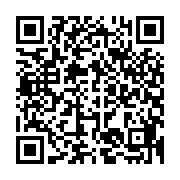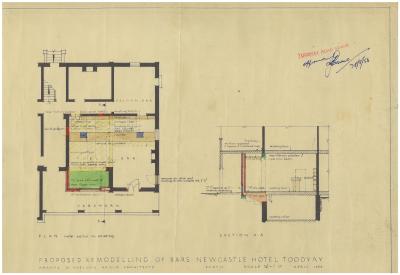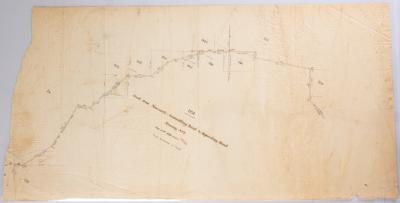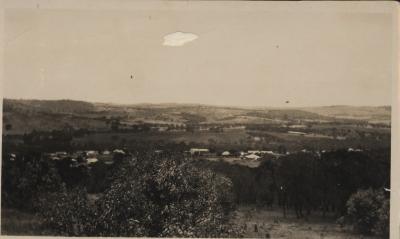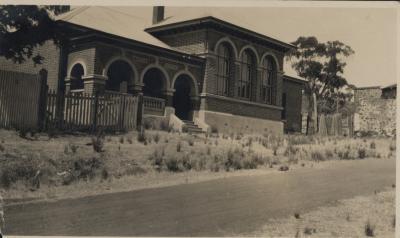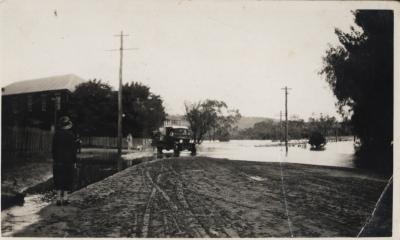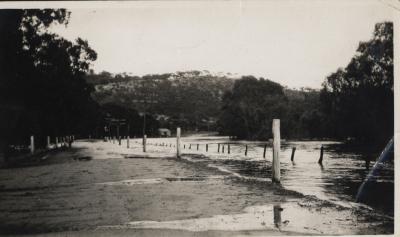AUDIO CASSETTE TAPES: BEE KEEPING X 2, SAM COOK ORAL HISTORY
1994Audio tapes on Bee keeping made in 1994.
Two casette tapes stored in plastic cassette tape holders about beekeeping in Toodyay by the Cook family.
Interviewee: Samuel Charles Cook, born July 15th 1916
Interviewer - Desrae Clarke
The following content log is taken from the MP3 version of these tapes.
Tape 1
Introduction by Desrae Clarke
.32 Homestead block grant
1.55 Environment for apiaries on block, tree species etc.
2.49 Honey house and process of extracting honey
5.15 Hive migration - Transport of hives in the early days
9.58 Start of major migrations of hives in 1935
10.41 Extraction of honey when hives away from honey house
11.33 containers/packaging for honey & marketing
13.57 manufacture & placement of hives
15.55 advances in transport to move hives: max 15 miles, prized site names, difficulties of various land-use affecting quality of trees for bees.
19.05 Julimar Forrest made a conservation park in 1993
21.20 wells, access to water
22.20 access into Julimar forest area, creating tracks, fires
24.25 hunting kangaroos, possums, rabbits, 28 parrots
25.30 purchase of new truck, advantage of motor transport, could carry 48 single hives
29.27 Uncle Arthur (Cook) purchased an even bigger truck in 1935 for the much longer Manjimup migrations
32.33 1935-1937 difficult financial times, glut of honey
34.70 In 1939, just before WW1, there was an increased demand for honey, and there was some export (to UK market)
35.00 managing during hard times, fruit from orchard sent to Kalgoorlie market rather than metropolitan, barter system with other stores for products
36.45 prices for honey: late 1930s?
38.07 using steam to heat outside of outside of tank holding honey, as well as bottom, so that honey wouldn’t stick to walls and then cause it to collapse
39.10 Honey Pool
40.10 sales of beeswax, for manufacture of boot polish and by chemists
41.10 1940-1 further migrations of hives, looking for Karri in Manjimup & Pemberton, purchase of V8 truck, had a specially built body for beekeeping, could carry 100 hives
44.44 Using milled and second-hand timber for making hives and transport covers
45.37 Sept 1941 migration of 120 hives to Beedelup NP – lost hives due to swarming (i.e. all bees, including the queen, abandon the existing hive completely due to various reasons including lack of food): different plant species not providing enough nutrients
49.06 names of areas in Manjimup where hives were left: 600-700 hives
51.11 managing honey in cold weather, difficult to extract from hives
53.10 after initial time when bees were not producing, hives were left longer in Manjimup and when they returned the hives were over-full and honey was difficult to extract. Huge harvest in the end, ran out of tins
57.06 father became ill
57.39 Bill’s (brother) 21st, wet weather proved difficulties in harvesting, loss of bees during transport (packed tightly on back of truck, overheating and suffocating)
1.00.50 Two trucks now working to transport hives – Ford & Chev.
1.04.05 Process to extract honey from hives in cold weather
1.07.24 Early 1940s withdrawing from the Karri forests for a few years to await the next four-year cycle, reflecting on reasons why hives were transported so far away from Toodyay – no sites in Toodyay, Karri honey flavour sought after, long flowering period for Karri
1.09.19 Prices for honey early 1940s.
1.09.36 War years, 18yrs-45yrs Compulsory National Service: 3 months training at Narrogin, father died in Jan 1942
1.12.46 Honey sought after by UK enabled sale of surplus honey from mid-1930s onwards. Non-perishable food.
1.14.11 Farm had 1,000 hives but only one brother Harry was left behind to look after them, because other adult family members had been called up to serve in the military. Stan was released from war service to help his brother with the bees to get them ready for the Jarrah flowering season in Dec 1943, for what was a bountiful year.
Tape 2
.17 uncertain as to what prompts greater or lesser flowering which affects honey yield
.56 Cyclone in 1944
2.19 lifestyle attending the remote hives
3.32 Autumn 1944 shift of hives back down to the Karri forests down south, war rationing meant using gas producers on vehicles which reduced power and it took about 10 hours to travel from Toodyay to Manjimup
9.00 Shortage of honey to fill export orders in 1944, possibly due to not enough flowers on the Karri at the time. After March 1945 more flowers appeared and honey was back to good production
10.34 Innovations in the mid-1940s. Power gear to the 9-frame extractor installed, replacing the hand-turning gear. Power supplied by a stationary engine. Capping reducer – a system of bars which steam was passed through to melt the capping on the frames. Using a portable steam boiler to provide steam for the capping reducer and for superheating the capping knife.
13.08 Frame extractor – semi radial type
14.21 Toodyay-Clackline Rd under construction
15.15 December 1945 Moved hives to Wandoo woodland in the Cranbrook/Kojonup area from Manjimup (80 miles). Good production with extended flowering season to end of March 1946. 80 hives at 10 sites. Possibly also due to a better strain of bee that the family had developed. Honey stacked in bush due to effort of moving honey by April. Extracting equipment - uncapping reducer, honey extractor, steam boiler – had to be moved from site to site.
21.08 Extracting honey process
23.03 1946: 2,300 tins of honey – 200 4-gallon tins per load on the one truck. Average of 84kgs per hive. Carting honey from Cranbrook to Perth took more than one day, due to slower gas-powered vehicle – had to camp along the road.
24.25 Honey Pool, Stuart Street, West Perth & overflow at Wesfarmers
25.18 Other areas producing honey - Ongerup
27.20 Studebaker car
28.42 Wallace Coleman, cousin
29.00 WA delegate to Annual conference of Victorian Apiarists Federation & Australian Council of Apiarists Association conference in Melbourne. Learned about better methods of transporting hives and better ways to manage hives.
32.38 Returned and trialled new methods in 1947 – methods of transport of hives, a purpose-built extractive caravan (prevented a lot of heavy lifting of equipment on and off the back of a truck)
38.20 petrol rationing continued until late 1949
41.48 accident in borrowed vehicle
42.37 August 1947 (or 48?), looking at returning to Manjimup with the bees. By Dec 1948 (noted at 44.52) moved the hives back down to that area
47.15 Apiarist families from Victoria brought bees and transportable home across to Lake Grace and Manjimup. Many apiarists in the area. Passed on knowledge and more modern methods to locals. (Superior management and strains of bees allowed them greater honey yields)
Got married, moved down to Manjimup
53.10 Talk of establishing an Australian Honey Board, but it didn’t go ahead probably because of State parochialism
54.09 Returned to Toodyay 1951 to family farm. Went out on own in 1956.
55.50 New method of shifting bees – open entrance shifting. Load at daylight, transport at night. Previously the hives were covered, and there was a chance of suffocation during transport.
58.20 types of honey containers - later used 44 gallon drum instead of 4 gallon tin
Recording concludes 59.27
gap
resumes 59.40 (Poor quality sound)
Early years at Toodyay - Trees were mainly redgum, - only when the redgum flowered did the bees began to gather honey. Firstly the hives were kept in the one spot, ¼ mile away from the house where an extracting house was built.
Later shifted some bees by the use of a spring cart, taking about 8 single hives at a time. They were moved to York gum, in the vicinity of Coondle siding about 2 miles towards Toodyay. Then York gum was very prolific, the whole Toodyay district was covered. Today it’s all been cleared except for a bit on the hill tops.
Honey sold to stores in Perth inc. Charlie Carters, Howard & Kemp, WJ Bateman, Robert Hardiman (Fremantle) was a principal buyer.
1.01.00 Repeat of part of above section
The first tape was recorded on 12 August 1994. The second tape was recorded on 26 August 1994.
The recording was lodged with the Battye Library by the interviewer, Desrae Clark.
Transcript of interview completed in 2001 by Jemma Bell. (proof read by Beth Frayne, with typos noted in pencil.)
Details
Details
This recording also held by the Toodyay Historical Society, accession number OH2792.
Converted to CD April 2020 as 2020.232a,b
Local
Other items from Shire of Toodyay
- METAL PLAQUE & STAND; PORTRAIT, LADY
- SPECIFICATIONS, FURNITURE, NEWCASTLE MUNICIPAL COUNCIL CHAMBERS, W.A. 1899
- PLAN, NEWCASTLE HOTEL, BARS, PROPOSED REMODELLING
- PLANS; PROPOSED TOODYAY ROAD BOARD HALL & OFFICES, 1946
- PLAN; SUBDIVISION, SURVEY OF AVON LOCATION U2
- PLAN, ROAD FROM NEWCASTLE GOOMALLING ROAD TO BEJOORDING ROAD, TRACING NO 2
- TOODYAY FROM RIFLE RANGE
- COURT HOUSE TOODYAY
- ANZAC DAY MARCH, TOODAY 1934/5
- SHIFTING FURNITURE
- SHIFTING FURNITURE DURING TOODYAY FLOODS 1935
- LLOYD'S CROSSING FLOODS, TOODYAY 1934
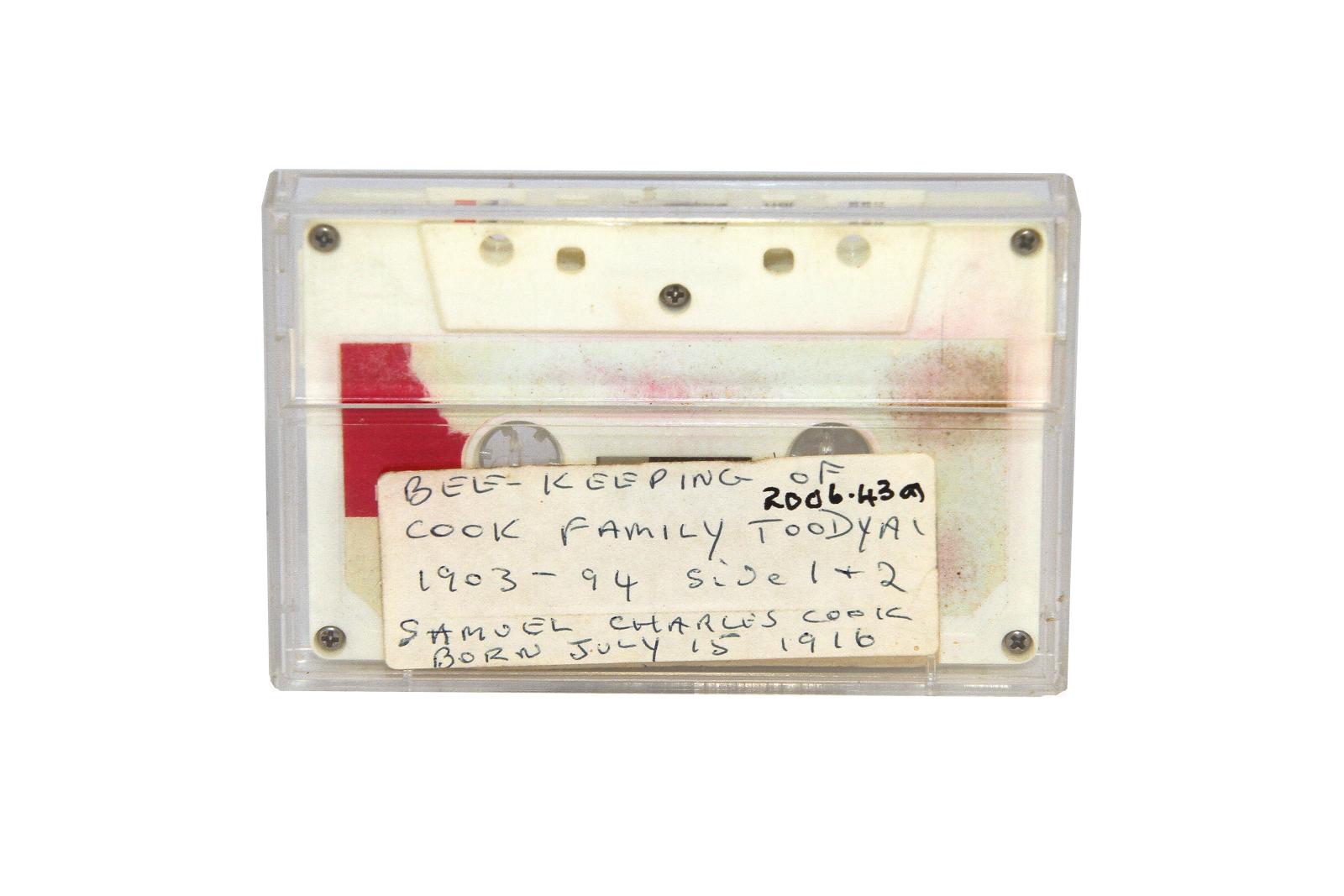

Scan this QR code to open this page on your phone ->
